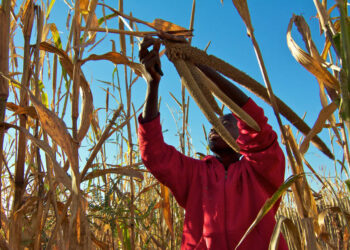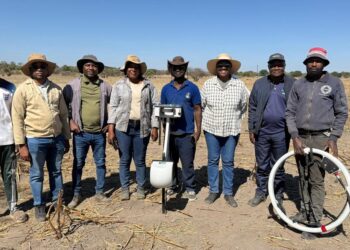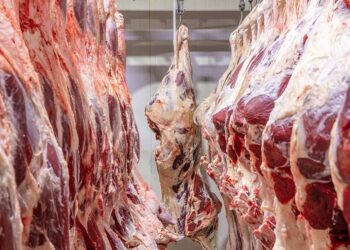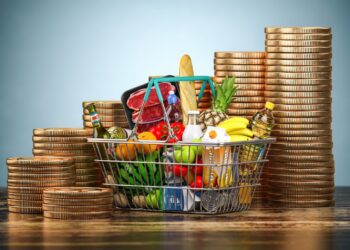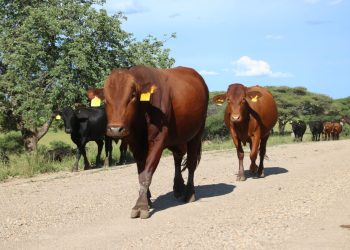
The Livestock and Livestock Products Board of Namibia (LLPBN) says the country’s beef exports increased by 44% reaching 20,750,253 kilograms year to date.
LLPBN’s Statistician for Trade & Strategic Marketing Fransina Angula said despite the significant annual growth, October exports totalled 1,425,965 kilograms, reflecting an 11.3% decline compared to October 2023.
“Year to date (YTD), the EU remains Namibia’s biggest market for beef exports. The EU market absorbed 55.3% of total beef exports while South Africa, UK and Norway took up 20.4%, 14.5% and 7.21%, respectively as top destinations. YTD Beef imports primarily in the form of processed and offal products rose by 10.5%,†she said.
She further explained that the cattle sector experienced a 1.2% year-on-year (Y-o-Y) decline in marketing activities.
A total of 19,659 cattle were marketed during the month under review, compared to 19,906 in October 2023 largely driven by reduced live exports and slaughtering at B&C class abattoirs, which fell by 22.2% and 30.6%.
There were mixed trends in October. Angula said s-VCF weaner prices rebounded, averaging N$28.67/kg compared to N$24.24/kg in October 2023.
Meanwhile, n-VCF tolly prices dropped to N$22.40/kg during the same period. The B2 producer carcass price also declined, averaging N$59.10/kg, down from N$61.31/kg recorded in the corresponding period of 2023.
“Y-o-Y, cattle marketing dropped by 1.2 per cent. 19,659 cattle were marked compared to 19,906 heads marketed during the corresponding period of 2023. Both live exports of animals and slaughtering by B&C class abattoirs declined by 22.2 per cent and 30.6 percent, respectively,†she said.
Furthermore, the sheep sector saw a 24.6% Y-o-Y decline in marketing activities, with all segments reporting declines.
Live sheep exports fell by 29%, with only 27,469 sheep exported compared to 38,669 in October 2023.
Slaughtering at A as well as B&C class abattoirs decreased by 17.3% and 10.3%, respectively, with throughput dropping from 14,377 heads in 2023 to 12,505 heads in 2024.
Lamb and mutton exports also declined sharply by 59.4% in October, totalling 648,414kg YTD compared to 884,408kg during the same period in 2023.
Of October’s exports, 92.2% went to South Africa, with the remaining 7.8% destined for Botswana.
Meanwhile, the A2 producer price peaked at N$85.56/kg in October, supported by increased demand as abattoirs began slaughtering for the Norwegian market.
“The Namibian A2 producer price peaked in October 2024 as abattoirs began slaughtering for the Norwegian market. During this period, the A2 producer price reached N$85.56/kg, marking a significant increase in producer prices compared to earlier months in 2024,†she said.
Meanwhile, the goat sector experienced a 20.3% decrease in marketing activities. A total of 11,438 goats were marketed in October 2024, down from 14,355 in the same period of 2023.
The decline was attributed to reduced live exports and decreased slaughtering at local abattoirs. However, the average producer price for lamb goats rose significantly to N$35.67/kg, compared to N$27.31/kg in October 2023.
The Namibian pork sector showed strong performance in October 2024, with pig marketing increasing by 10.2% year-on-year.
LLPBN said a total of 4,386 pigs were marketed at LLPBN-approved abattoirs, up from 3,979 in the same period last year.
In addition to this growth, pork imports dropped dramatically during the review period. Only 357,348kg of pork were imported, a significant reduction from the 716,213kg brought in during October 2023.
The primary sources for these imports were South Africa, Spain, Germany, Denmark, and Botswana.
“A total of 357,348kg of pork came in as imports relative to 716,213kg imported during 2023. South Africa, Spain, Germany, Denmark and Botswana emerged as Namibia’s leading pork import markets during October 2024. The pork price ceiling under the scheme remains set at N$51.03/kg,†Angula said.


